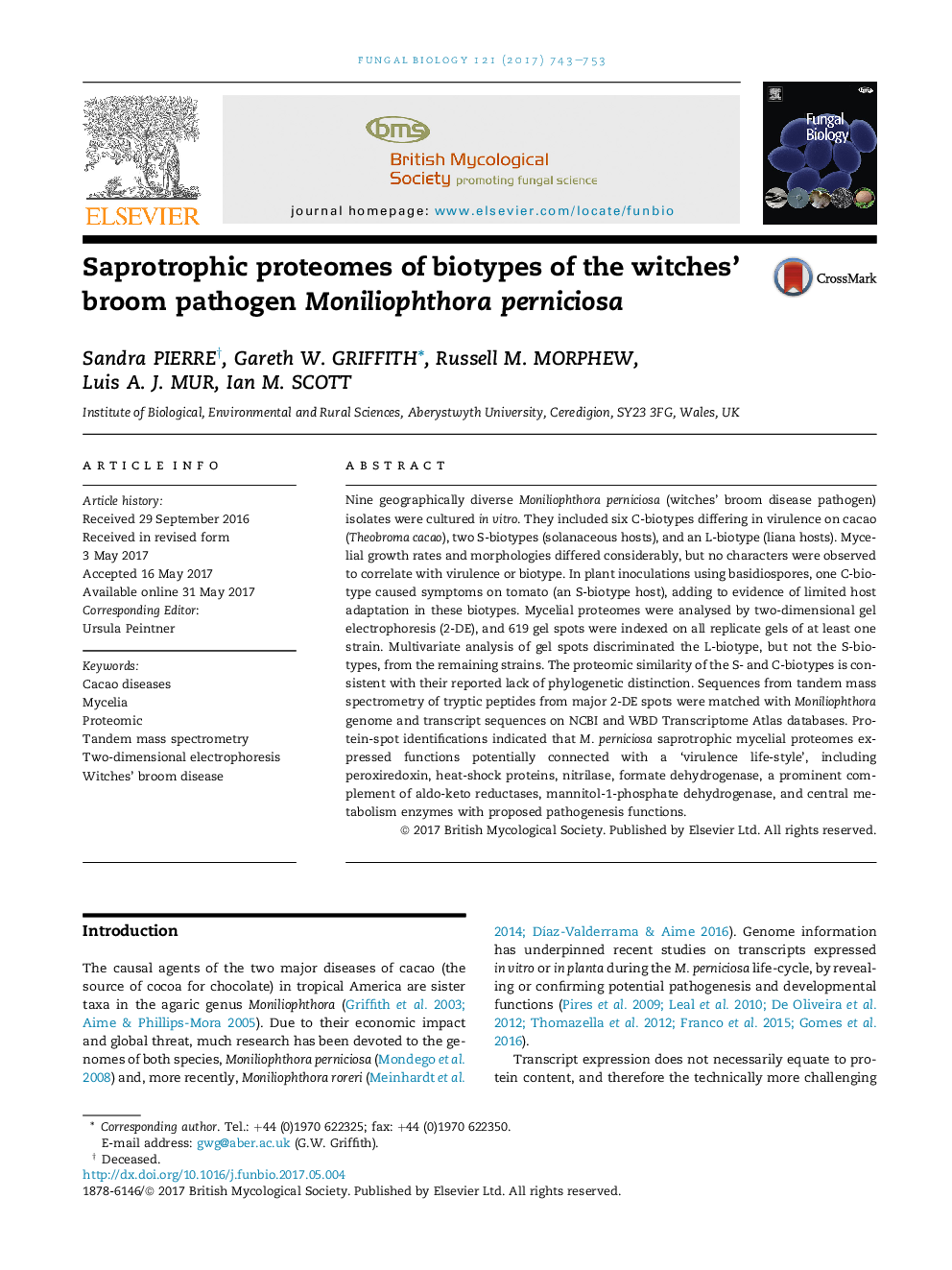| Article ID | Journal | Published Year | Pages | File Type |
|---|---|---|---|---|
| 5739617 | Fungal Biology | 2017 | 11 Pages |
Nine geographically diverse Moniliophthora perniciosa (witches' broom disease pathogen) isolates were cultured in vitro. They included six C-biotypes differing in virulence on cacao (Theobroma cacao), two S-biotypes (solanaceous hosts), and an L-biotype (liana hosts). Mycelial growth rates and morphologies differed considerably, but no characters were observed to correlate with virulence or biotype. In plant inoculations using basidiospores, one C-biotype caused symptoms on tomato (an S-biotype host), adding to evidence of limited host adaptation in these biotypes. Mycelial proteomes were analysed by two-dimensional gel electrophoresis (2-DE), and 619 gel spots were indexed on all replicate gels of at least one strain. Multivariate analysis of gel spots discriminated the L-biotype, but not the S-biotypes, from the remaining strains. The proteomic similarity of the S- and C-biotypes is consistent with their reported lack of phylogenetic distinction. Sequences from tandem mass spectrometry of tryptic peptides from major 2-DE spots were matched with Moniliophthora genome and transcript sequences on NCBI and WBD Transcriptome Atlas databases. Protein-spot identifications indicated that M. perniciosa saprotrophic mycelial proteomes expressed functions potentially connected with a 'virulence life-style', including peroxiredoxin, heat-shock proteins, nitrilase, formate dehydrogenase, a prominent complement of aldo-keto reductases, mannitol-1-phosphate dehydrogenase, and central metabolism enzymes with proposed pathogenesis functions.
